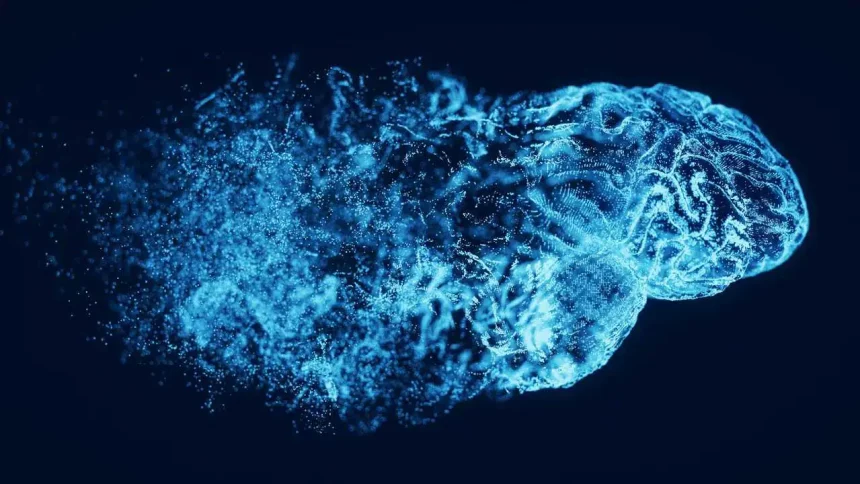Do you ever wonder what goes on in the mind in the moments just before the last breath of life? This age-old question has intrigued scientists, philosophers, and the curious for centuries. Now, thanks to a groundbreaking study, we are on the verge of unraveling the mysterious process that our brains go through as we approach death. This journey into the uncharted territories of human consciousness uncovers a phenomenon called “Last Recall,” where the dying brain may replay snippets of past experiences in a fleeting, dream-like sequence. Picture a montage of life’s highlights flashing before your mind’s eye in the final moments of existence. This concept not only challenges our comprehension of life’s final chapter but also sheds light on the intricate workings of the brain as we transition from life to death.
The Revolutionary Study:
In an unprecedented event, neuroscientists captured the brain activity of a dying human, offering a rare peek into one of life’s most enigmatic transitions. During the treatment of an 87-year-old patient being monitored for epilepsy with continuous electroencephalography, the patient unexpectedly suffered a heart attack and passed away. This unexpected event provided researchers with a unique opportunity to observe the brain’s activity in its final moments.
For the first time ever, this study witnessed the human brain in its dying moments, revealing rhythmic patterns of brain activity similar to those seen during dreaming, memory recall, and meditation. Published in the journal Frontiers in Aging Neuroscience, this research provides new insights into the brain’s potential role in organizing thoughts as life nears its end and offers an explanation for the vivid recollections reported in near-death experiences. Through this groundbreaking research, we are urged to reassess our understanding of the boundaries between life and death based on the fascinating discoveries of our brain’s capabilities as we approach the end.
Unveiling the Mysteries of Death:
A study led by Dr. Ajmal Zemmar at the University of Louisville focused on analyzing brain activity around the time of death. With an array of sensors, the researchers recorded 900 seconds of brain activity, with specific attention to the 30 seconds before and after the heart’s last beat. What they uncovered was remarkable. Just as the heartbeat ceased, the brain displayed a surge in specific patterns of neural oscillations, particularly gamma oscillations, along with delta, theta, alpha, and beta oscillations.
These oscillations are rhythmic patterns of activity crucial to our cognitive functions. They play roles in concentration, dreaming, memory retrieval, information processing, and conscious perception. The presence of such oscillations at the moment of death suggests that the brain may engage in a final act of recollection, mirroring the vivid life reviews experienced by many in near-death encounters. The speculation that the brain orchestrates a last recall of significant life events before death adds a deep layer to our understanding of the transition from life to death, challenging existing ideas and illuminating the brain’s remarkable activity during this critical phase.
The Importance of Gamma Oscillations:
At the core of this study’s findings lies the significance of gamma oscillations, a type of brain wave linked to high cognitive functions. The discovery of gamma oscillations at the time of death underscores the potential for continued mental processes and awareness even as life draws to a close. These oscillations, along with others, create a symphony of brain activity fundamental to our cognitive experience.
The presence of gamma oscillations during death challenges our understanding of consciousness and its boundaries, suggesting that memory, perception, and perhaps even consciousness itself may persist into the final stages of life. This insight into the dying brain’s activity deepens our understanding of human consciousness and offers the comforting notion that, in our final moments, there may be a profound review of our lives orchestrated by the brain’s last burst of electrical activity.
Challenging Our Perception of Life and Death:
The findings from this research challenge traditional beliefs about the end of life and the cessation of brain activity. The presence of complex brain wave patterns at the moment of death suggests that our understanding of the end of life is more nuanced than previously thought. This has implications for medical decisions such as organ donation and raises ethical questions about how we treat those on the brink of death.
Moreover, these findings prompt a broader conversation about consciousness and its potential continuity beyond what we typically consider death. By pushing the boundaries of our understanding, this research opens new avenues for exploration and dialogue on the intersection of life, death, and consciousness, inviting us to reconsider our approach to death and dying.
A Universal Phenomenon?
The implications of this study extend beyond human experiences, suggesting a possible universal biological response to death. Previous research on rats has observed similar changes in gamma oscillations at the moment of death, raising the intriguing possibility of a shared biological process across species. This concept challenges our understanding of consciousness and prompts us to explore the nature of life and death in a new light.






